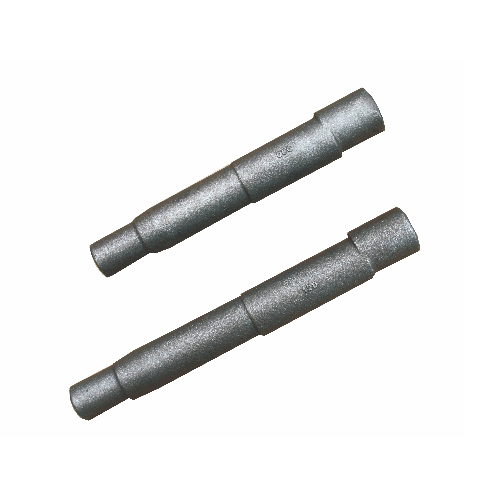Classification and performance of forging equipment
2024-03-15
Classification and performance of forging equipment
Forging as a kind of metal processing, the use of metal plasticity, usually after the billet heating, hammer or pressure, so that the workpiece deformation, to achieve the specified shape and size, but also improve the mechanical properties of metal materials. So, what is forging, and what are the classification and performance of forging equipment?
Forging and stamping is referred to as forging press, according to the commonly used equipment in production, it is roughly divided into: heating equipment, forging and forming equipment and forging production auxiliary equipment. According to the transmission mode can be divided into: hammer, hydraulic press, crank press, rotary forging press and electric screw press. C41 series air hammer is suitable for a variety of free forging, such as extension, upsetting, punching, cutting, forging welding, torsion, bending, etc., using the tire film can be a variety of open die forging. Anyang Forging class | Classification and performance of forging equipment, Anyang Forging is a professional air hammer manufacturer, the production range of air hammer includes 9KG, 15KG, 25KG, 40KG, 55KG, 75KG, 110KG, 150KG, 250KG, 400KG, 560KG, 750KG, 1000KG, 2000KG. According to the specifications of the air hammer size and use is divided into large air hammer (mainly used for industrial forging) and small air hammer (mainly used for iron forging).
Forging is mainly classified according to forming method and deformation temperature. Forging according to the forming method can be divided into forging and stamping two categories; According to deformation temperature forging can be divided into hot forging, cold forging, warm forging and isothermal forging. Today we talk about hot forging.
Hot forging
It is forged above the recrystallization temperature of the metal. Increasing the temperature can improve the plasticity of the metal, is conducive to improving the internal quality of the workpiece, so that it is not easy to crack. The high temperature can also reduce the deformation resistance of the metal and reduce the tonnage of the required forging machinery. However, the hot forging process is many, the workpiece accuracy is poor, the surface is not smooth, and the forging is easy to produce oxidation, decarburization and burning damage. When the workpiece is large and thick, the material strength is high, and the plasticity is low (such as the rolling bending of the extra-thick plate, the drawing length of the high carbon steel rod, etc.), the hot forging is used. For classification and performance of forging equipment |, the temperature interval between the beginning and final forging temperature of hot forging should be as large as possible. However, excessive initial forging temperature will cause excessive growth of metal grains and overheat phenomenon, which will reduce the quality of forging parts. When the temperature is close to the melting point of the metal, the intergranular low melting point material will melt and intergranular oxidation, resulting in overfiring. Burned blanks tend to crumble during forging. Free forging adopts hot forging method.
Free forging
It refers to a forging processing method that uses a simple universal tool or directly exerts external force on the blank between the upper and lower anvil iron of the forging equipment to deform the blank and obtain the required geometry and internal quality. Forgings produced by the free forging method are called free forgings. Free forging is based on the production of small batches of forgings, using forging hammer, hydraulic press and other forging equipment to form the blanks, to obtain qualified forgings. The classification and performance of forging equipment | The basic processes of free forging include upsetting, drawing, punching, cutting, bending, torsion, dislocation and forging, etc. Free forging adopts hot forging method.
Die forging
Die forging is divided into open die forging and closed die forging. The metal blank is compressed and deformed in the forging die with a certain shape to obtain the forging. Die forging is generally used to produce parts with small weight and large batch. Die forging can be divided into hot die forging, warm forging and cold forging. The classification and performance of forging equipment | Warm forging and cold forging are the future development direction of die forging and also represent the level of forging technology.
The basic feature of forging equipment is that the force is large, so it is mostly heavy equipment, and it is formed by applying pressure to the metal. The forging equipment is provided with safety protection devices to ensure equipment and personal safety.
this is shaft forging produced by tongxin precision forging company




